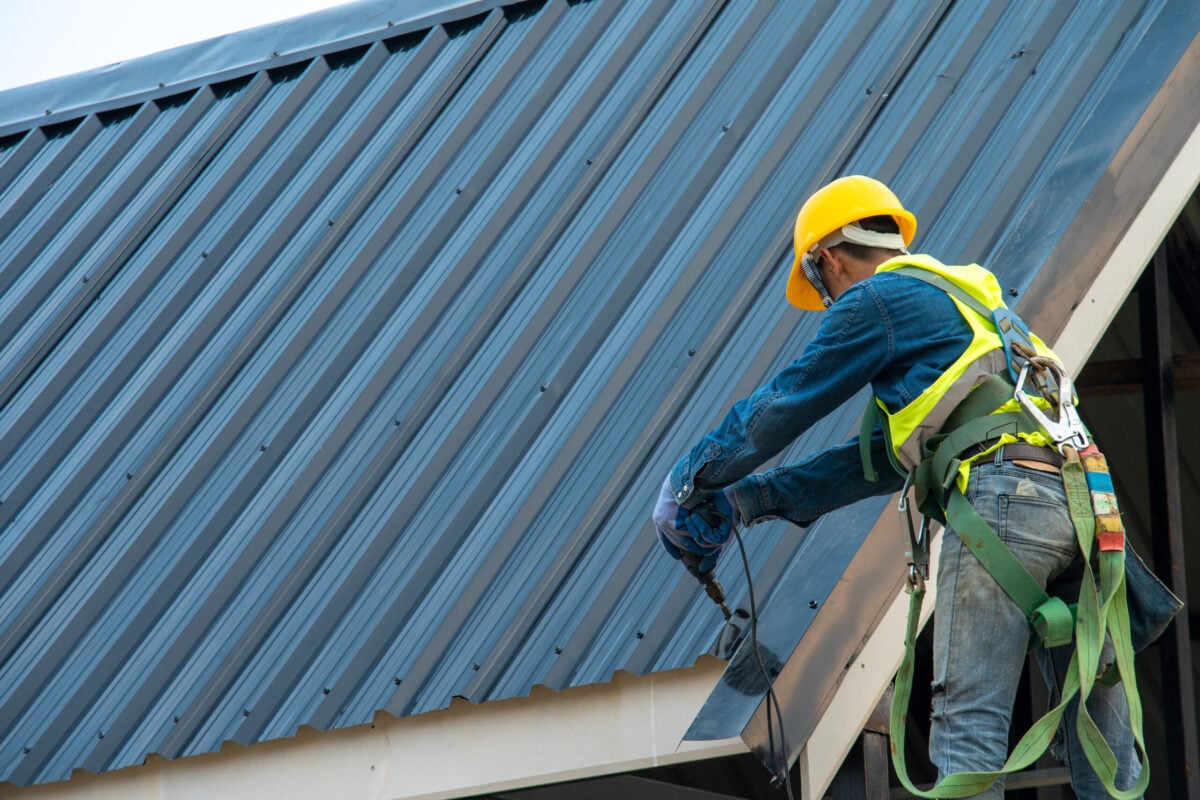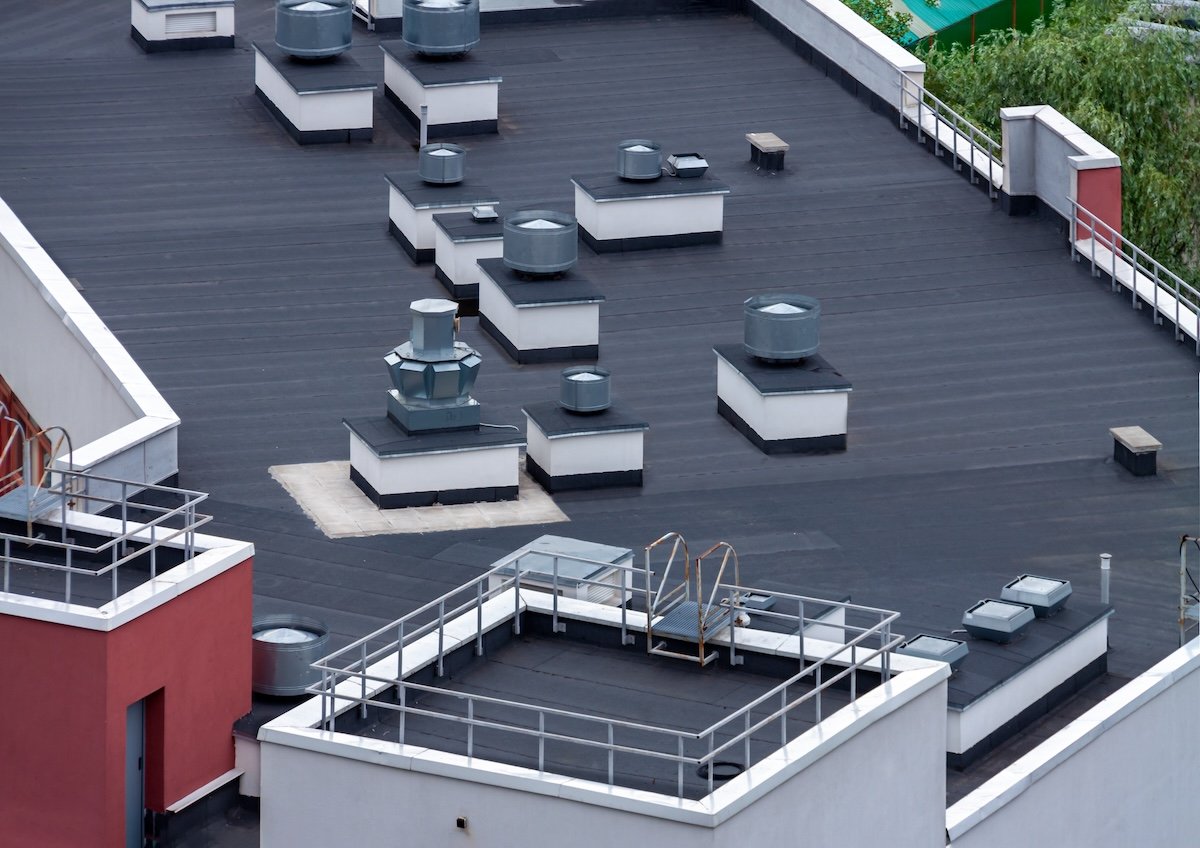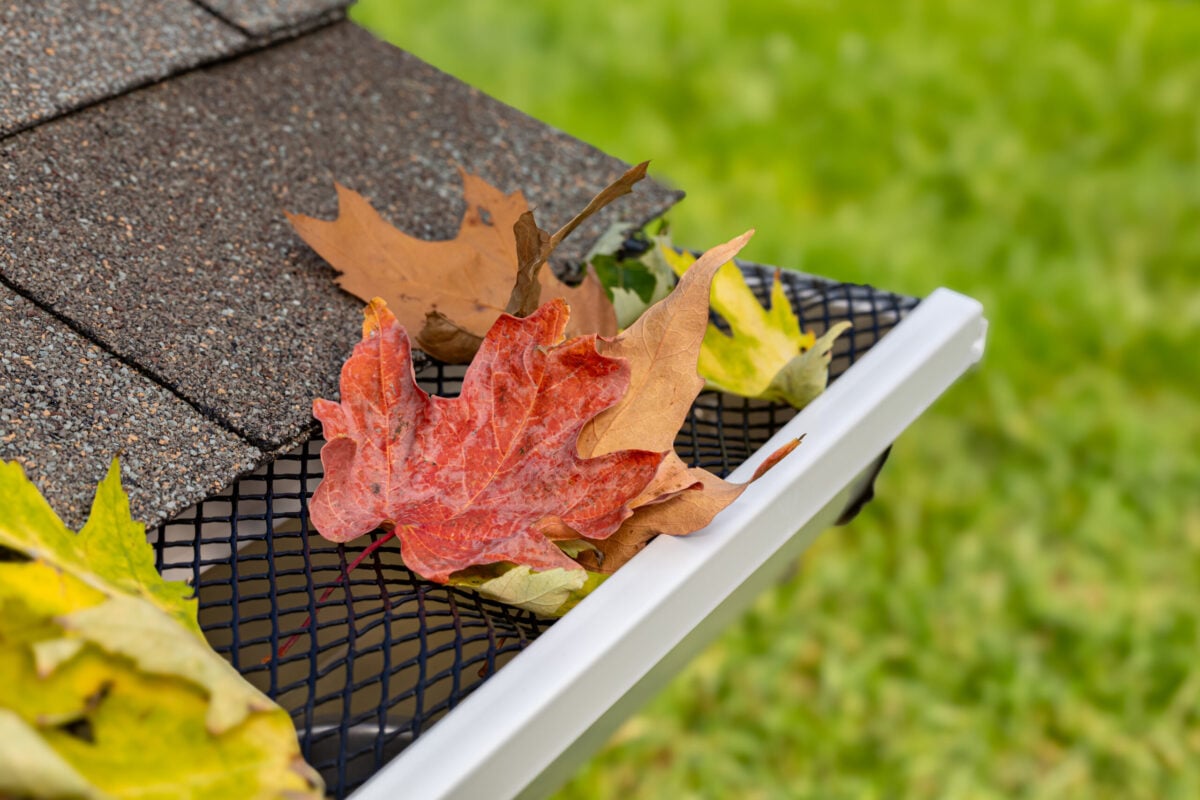What Causes Missing Shingles On Roof? (Repair Guide)
7 Min Read
POSTED 01.08.2025
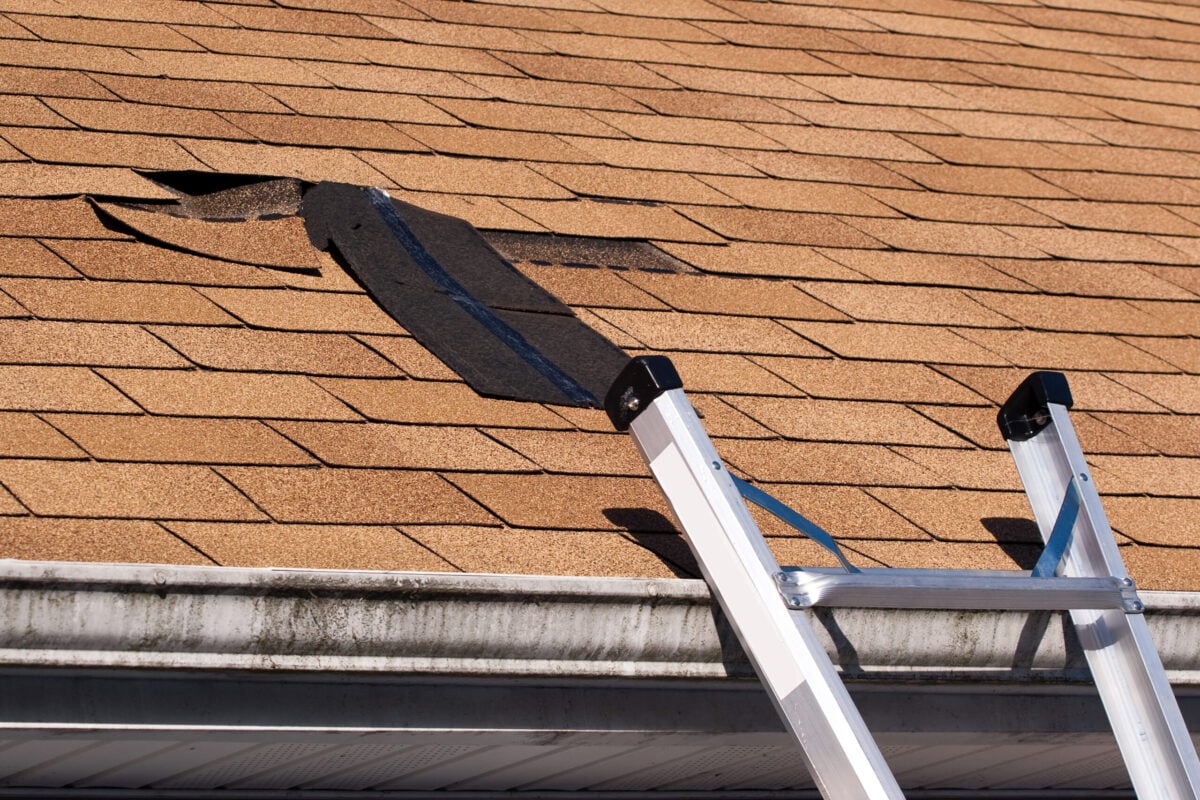
Discovering missing shingles on your roof can be alarming. Your roof protects your home from the elements, and even a few missing shingles can lead to serious water damage, structural issues, and costly repairs if left unaddressed. Understanding what causes shingles to come loose or fall off entirely helps you take preventive action and know when to call professional roofers.
This comprehensive guide covers everything you need to know about missing shingles on roof. We’ll explore the main causes behind shingle loss, help you identify warning signs, walk you through repair options, and explain when professional intervention becomes necessary. You’ll also learn preventive maintenance strategies to protect your investment and keep your roof in excellent condition for years to come.
Here’s what we’ll cover:
- Common causes of missing shingles and how they develop
- Signs that indicate you have missing or damaged shingles
- Step-by-step repair approaches for different scenarios
- Preventive maintenance tips to avoid future shingle problems
🤔 Understanding Why Shingles Go Missing
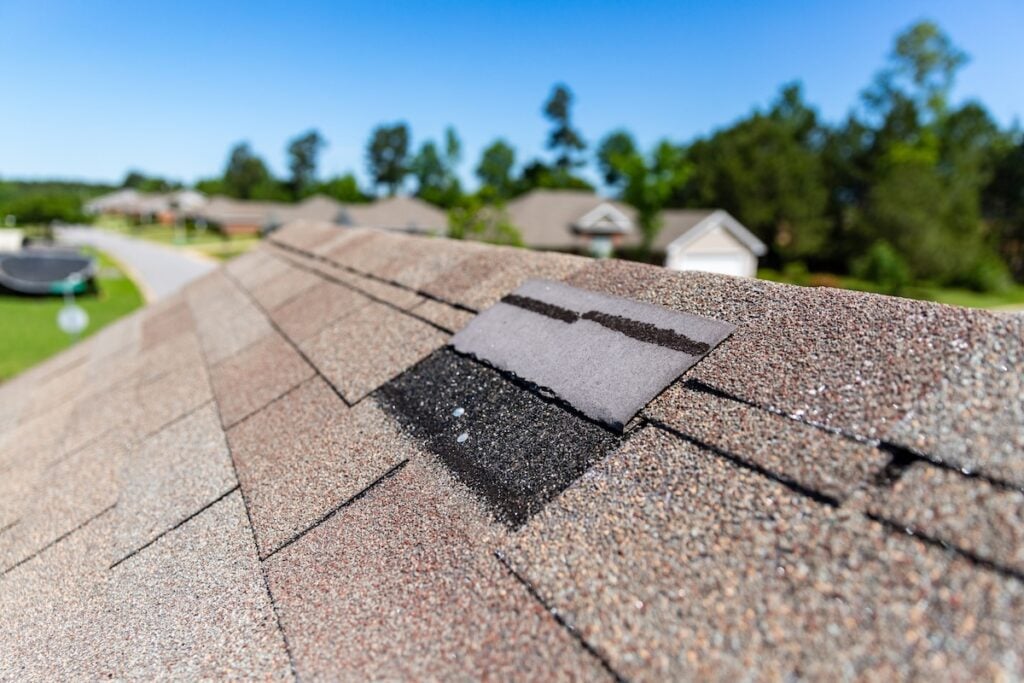
Several factors contribute to shingle loss, ranging from natural wear and extreme weather to installation problems and material defects. Identifying the root cause helps determine the best repair approach and prevents recurring issues.
1. Severe Weather Conditions
Severe weather is one of the biggest threats to roof shingles, causing substantial damage over time.
- High Winds: Winds exceeding 50 mph create uplift forces that can break the seal between shingles, tearing them off the roof deck.
- Hail Storms: Hail impacts crack shingles and dislodge protective granules that shield the roof from harmful UV rays.
- Heavy Snow Loads: Excessive snow can add significant stress to the roof structure, potentially leading to sagging or collapse.
- Ice Dams: When ice dams form, they force water under shingles, lifting them and creating opportunities for leaks and water damage.
- Frequent Weather Fluctuations: Repeated exposure to extreme weather weakens shingles over time, reducing their effectiveness.
2. Age and Material Deterioration
As shingles age, their materials degrade, leading to reduced performance and increased vulnerability.
- Lifespan Limits: Asphalt shingles typically last 20-30 years, depending on quality and climate conditions.
- Weakened Adhesive: Over time, the sealant strips that bond shingles become brittle and lose their grip.
- UV Radiation: Prolonged sun exposure breaks down the asphalt compounds, making shingles more prone to cracks and tears.
- Temperature Fluctuations: Constant expansion and contraction due to hot and cold weather weakens material bonds, causing cracking and curling.
- Granule Loss: Aging shingles lose their protective granules, leaving the roof vulnerable to further damage.
3. Poor Installation Practices
Improper installation significantly decreases the lifespan and effectiveness of roof shingles.
- Insufficient Nails: Using too few nails to secure shingles leaves them vulnerable to strong winds.
- Incorrect Nail Placement: Misplaced nails compromise the shingle attachment, allowing water infiltration and wind uplift.
- Misaligned Shingles: Failing to properly align shingles creates gaps and weak points in the roof surface.
- Sealant Activation Errors: Not properly activating the sealant strips during installation prevents shingles from forming a secure bond.
- Inadequate Flashing: Poorly installed flashing further exposes the roof to water damage and leaks.
4. Inadequate Roof Ventilation
Poor attic ventilation contributes to many roofing problems by creating temperature imbalances.
- Excessive Heat Buildup: Hot air trapped in the attic during summer can cause shingles to curl, crack, or warp.
- Ice Dam Formation: In winter, inadequate ventilation allows heat from the house to melt snow on the roof, refreezing at the edges and forming damaging ice dams.
- Moisture Accumulation: Poor ventilation traps moisture in the attic, leading to rot, mold growth, and damage to the roof structure.
- Shingle Lifespan Reduction: Prolonged exposure to extreme attic temperatures decreases the durability and effectiveness of shingles.
5. Structural Movement and Settling
Natural movement and settling of a home can have a surprising impact on roof integrity.
- Foundation Shifts: Settling foundations can cause stress on the roof structure, loosening shingles and nails.
- Thermal Expansion: Building materials expand and contract with temperature changes, putting stress on shingles and their attachments.
- Nail Pops: Structural movement can cause nails to rise above the roof deck, creating entry points for water and loosening shingles.
- Older Homes: Homes with older frames and materials are more prone to structural settling, resulting in more frequent roof issues.
6. Tree Damage and Debris Impact
Nearby trees and falling debris can wreak havoc on shingles over time.
- Overhanging Branches: Branches rubbing against shingles during windy conditions wear away protective granules and damage the underlying material.
- Falling Branches: Large branches breaking off during a storm can puncture or dislodge shingles, exposing the roof deck to water damage.
- Pine Cones and Small Debris: Frequent impacts from smaller debris can still lead to gradual weakening and damage over time.
- Leaf Accumulation: Piles of leaves can trap moisture and cause rot on shingles if not removed regularly.
- Tree Growth: Prolonged growth of nearby trees can increase the risk of branches and debris damaging the roof.
🔎 Identifying Missing Shingles and Related Damage
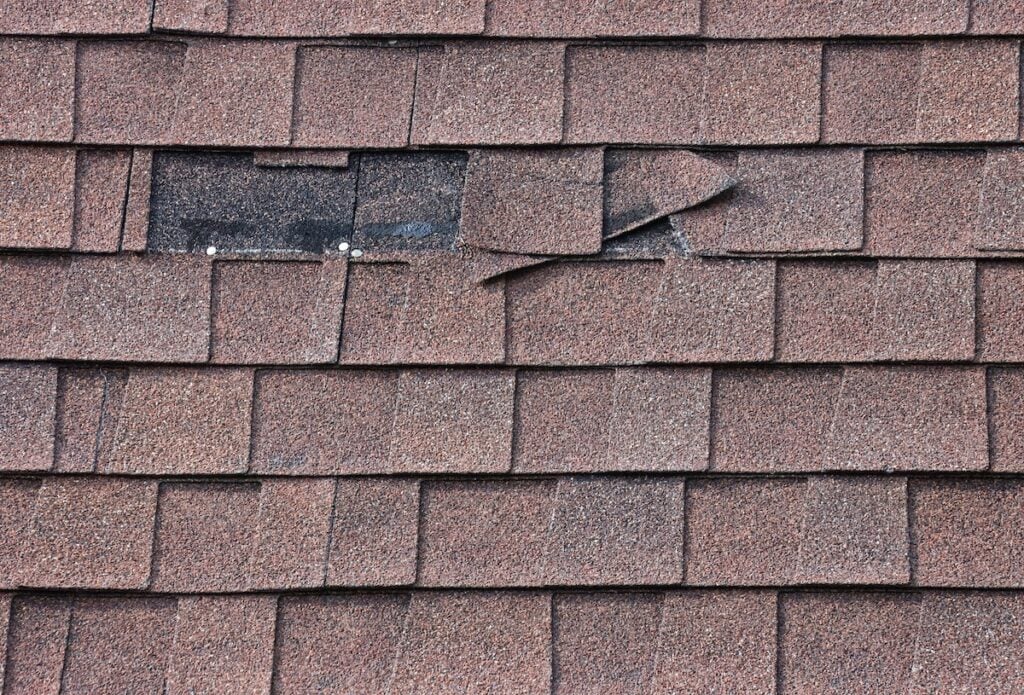
Regular roof inspections help you catch missing shingles before they cause extensive damage. You can perform basic visual inspections from the ground using binoculars, but professional inspections provide more thorough assessments.
Visual Signs From Ground Level
Look for obvious gaps in the shingle pattern where pieces are completely missing. Curled, cracked, or lifted shingle edges indicate potential problems. Check your gutters for excessive granule accumulation, which signals shingle deterioration. After storms, walk around your property to look for shingles that may have blown off.
Interior Warning Signs
Water stains on ceilings or walls often indicate roof leaks caused by missing shingles. Damp or musty odors in the attic suggest moisture infiltration. Check for daylight visible through the roof boards when standing in your attic during daytime hours.
Attic Inspection Points
Examine the underside of your roof deck for water stains, rot, or daylight penetration. Look for damaged or displaced insulation, which can indicate water infiltration. Check for proper ventilation to ensure adequate airflow through the attic space.
🛠️ Repair Options for Missing Shingles

The extent of damage determines your repair approach. Single missing shingles require different techniques than widespread damage affecting multiple areas of your roof.
Emergency Temporary Repairs
When you discover missing shingles during severe weather, temporary protection prevents further damage until permanent repairs can be completed. Use roofing cement to seal small gaps, apply plastic sheeting secured with roofing nails for larger areas, and place tarps over extensive damage zones.
Single Shingle Replacement
Replacing individual shingles requires careful attention to proper installation techniques. Start by lifting the shingles above the damaged area and removing any remaining nails. Slide the new shingle into position, ensuring proper alignment with surrounding shingles. Secure with roofing nails placed in the nail line, then apply roofing cement to seal the edges.
Multiple Shingle Repairs
Widespread shingle loss often indicates underlying problems that need addressing. Remove all damaged shingles in the affected area and inspect the underlying roof deck for damage. Replace any damaged decking materials before installing new shingles. Work from bottom to top, ensuring proper overlap and alignment.
Addressing Underlying Issues
Successful repairs must address the root causes of shingle loss. Improve attic ventilation if heat buildup contributed to the damage. Trim overhanging tree branches that scrape against the roof. Repair any structural issues that may have caused movement or stress.
🏡 Protecting Your Home with Expert Roofing Solutions
At Badgerland Exteriors, we take pride in being the team you can trust for all your roofing needs. Missing shingles may seem like a small issue, but they can quickly lead to bigger problems if left unaddressed. That’s why our experienced team is here to provide reliable, high-quality solutions tailored to your home. From quick repairs to full roof replacements, we combine top-tier materials with unmatched craftsmanship to ensure your roof is built to withstand the elements.
Protect your home, your family, and your peace of mind—contact Badgerland Exteriors today at (608) 643-0400 or visit our website to schedule your professional roof inspection. We’re here to keep your home safe and secure, so you can focus on what matters most.
Let’s Get Started
Fix Your Roof the Badger Way
Got a question? Want to learn more about your options when it comes to caring for your home exterior? Our team is standing by with the information you need to start you roof replacement project today!

